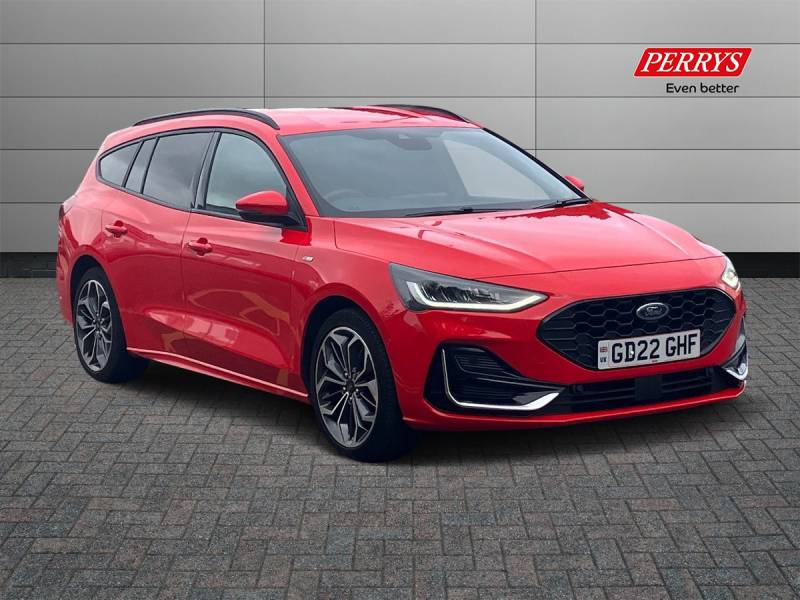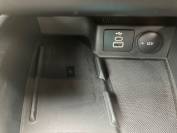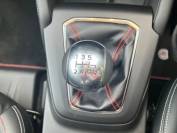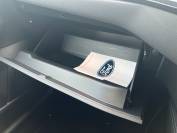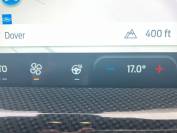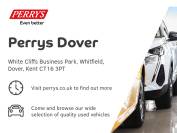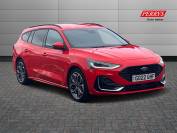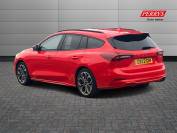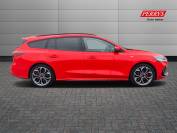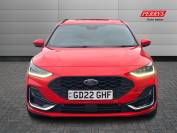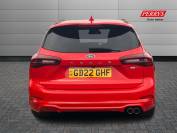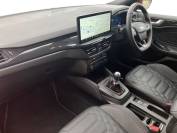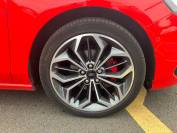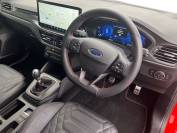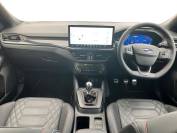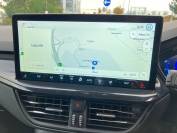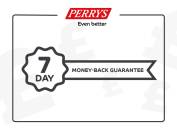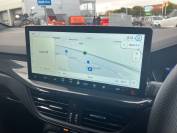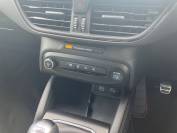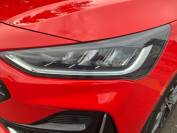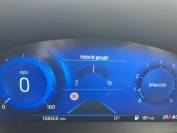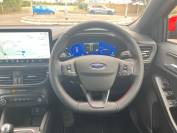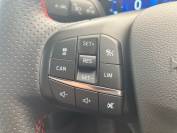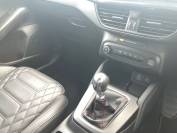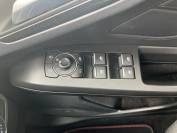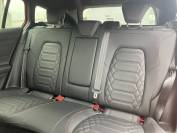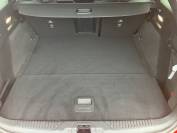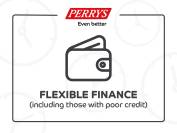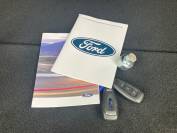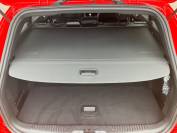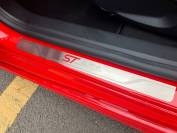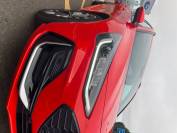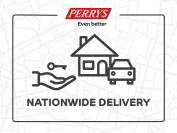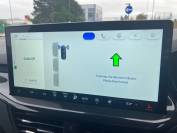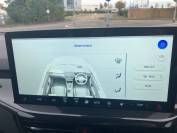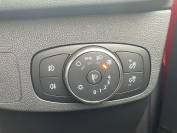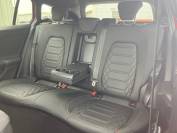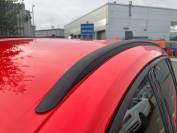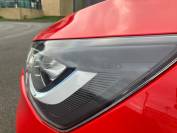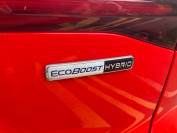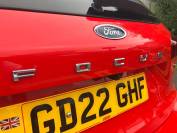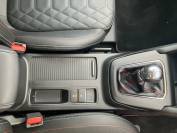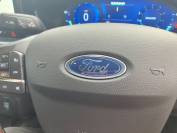FORD FOCUS 2022 (22)
St-line Vignale Mhe
FORD FOCUS 2022 (22)
St-line Vignale Mhe
Financial Disclosure
Perrys is Authorised and Regulated by the Financial Conduct Authority. (307639 ) Finance Subject to status. Other offers may be available but cannot be used in conjunction with this offer. We work with a number of carefully selected credit providers who may be able to offer you finance for your purchase. Perrys - 500 Pavilion Dr, Northampton NN4 7YJ. Companies House Number:972286. FCA number: 307639 .
Finance
We can introduce you to a limited number of lenders whose finance products will have different commission amounts payable to us for introducing you to them. This may be in the form of a fixed fee, a percentage of the balance financed, or another incentive.
The amount of commission that we expect to receive will be detailed to you clearly when we present you with a finance payment offer sheet. The exact commission amount payable to us will be presented to you once your finance proposal has been accepted, and always in good time before you complete any retail finance documentation with us.
We are a credit broker and will not provide you with impartial advice.
We actively monitor all finance transactions to ensure compliance and maintain transparency in all our dealings.
Any lenders we use will conduct a full credit search to decide if they can offer you finance. This search will show on your credit file and will be seen by other lenders. If the lender is unable to offer you finance, we will try up to three additional lenders, each of whom will record a search on your credit file. If these lenders are unable to offer you a finance agreement, we will then contact you and ask if you wish us to contact further lenders on your behalf.
Finance Products:
We will provide you with information to assist with your funding decision relating to Credit Agreements such as: Hire Purchase, Conditional Sale, Personal Contract Purchase (PCP), Personal Contract Hire (PCH) and Finance Leasing.
We will also send you Finance Product Information / Videos by email.
We do not charge you a fee for our services. Whichever lender we introduce you to, we will typically receive commission from them (either a fixed fee or a fixed percentage of the amount you borrow). A customer may ask for commission disclosure at any time from our initial discussions through to the point when their agreement is set live.

Independent Road Test Video & Review Courtesy of Car and Driving
Ten Second Review
The fourth generation Ford Focus Estate has been given a proper working over in this updated form, with greater practicality, sleeker looks, a much improved 'SYNC 4' infotainment system and extra technology. There's also impressive efficiency beneath the bonnet thanks to the hi-tech range of petrol and diesel engines. It's not the biggest or the cheapest estate in its sector, but it might just now be the most appealing all-rounder.
Background
Such is the pull of small SUVs that the estate car seems to have had its last rites read time and again, yet still they struggle on. The reason why they refuse to die? They're a good idea. What's more, if people were honest about why they really needed a vehicle, an estate car would make more practical sense. They carry just as much as many SUVs, yet they're better to drive, they're lighter and more aerodynamic which means better efficiency - and they're usually cheaper to buy too. Ford's brought us some brilliant estates down the years but as much as customers have warmed to the Focus hatch, the five-door estate has never occupied a huge slice of the overall Focus sales pie chart. Perhaps this improved version of the MK4 design can formulate a more convincing argument.
Driving Experience
This fourth generation Focus estate, like its predecessors, has a reputation as a family station wagon with the ability to entertain at the wheel - and if you enjoy your driving, that's something you'll appreciate pretty early on the first time you try one. Over twenty years ago, the original version of this model achieved much the same thing by standardising advanced multi-link rear suspension across its model line-up. Today, you get that too - in contrast to the hatch body shape which restricts this more advanced damping set-up to its most powerful variants. The engine range was significantly updated as recently as 2020 with Ford's latest mHEV Mild Hybrid technology and of course that's carried forward, with electrified mHEV 125 and 155PS versions of Ford's 1.0-litre three cylinder EcoBoost petrol unit. You can now though, get this 48-volt powerplant with a 7-speed Powershift auto gearbox. For entry-level customers not wanting to pay the premium required for the extra electrified tech, this three cylinder EcoBoost engine also continues to be offered in non-electrified 125PS form - which is the model you have to have if you want your 1.0-litre 125PS Focus Estate fitted with a manual gearbox. The mHEV mild hybrid version of the 125PS 1.0-litre model only comes as an auto. Order this 1.0-litre engine in the uprated 155PS form we tried and the mHEV tech becomes mandatory and there's a choice of either manual or auto transmission. Got all that? Good. Higher mileage drivers who remain unconvinced by petrol power will be pleased to see that the 1.5-litre 120PS EcoBlue diesel engine's been retained in the range - though only with 8-speed auto transmission. At the top of the line-up, the uber-rapid ST performance model continues on with the 280PS 2.3-litre EcoBoost petrol unit. As before, across the range the ride isn't overly firm, but body control through the bends is still exemplary, allowing you at the wheel to make the most of the stiff C2 platform, the feelsome power steering and the torque vectoring control system that helps you get the power down through the bends. It all combines to create a car that really can still reward at the wheel, even in its most affordable forms: there's still nothing else in this segment that feels quite the same. Yet it still does the sensible stuff well too, being decently refined, with confident braking and a lovely tactile gearshift.
Design and Build
The styling has usefully evolved but still looks a touch conservative in this station wagon guise. Versions of this improved Focus are marked out by smarter LED headlamps with built-in foglights. plus the brand badge has been moved from the bonnet to the front grille. And the darker rear tail lamps have a smarter 'loop light' illuminating signature. Bigger changes are reserved for the cabin, which with most versions now features a larger 13.2-inch 'SYNC 4' central touchscreen. In a controversial move, Ford has decided that this monitor should now incorporate the ventilation controls, giving the dashboard a cleaner, less cluttered look. We're not sure that this is actually a step forward but the infotainment system's ability to now accept over-the-air updates certainly is; as a result, you'll get into your Focus Estate one morning and find it able to do something it couldn't do the day before - which is rather cool. As before, rear seat space isn't exemplary, but there's decent room for a couple of adults. Since this is an estate though, our emphasis needs to be on the luggage bay, which really is a lot bigger than it is in the hatch. A typically-specified estate model fitted with a mini-spare offers up to 575-litres of capacity - or as much as 728-litres if you load to the roof. If you need more room and want to push forward the 60:40-split rear bench, then up to 1,653-litres of space is on offer, thanks to the 175mm of extra loading length and extra 43mm of roof height that was incorporated from the beginning into this fourth generation model, an increase apparently calculated so as to enable owners to comfortably accommodate a dog crate. Go for this station wagon variant and auto-folding 'Easy Fold' rear seat backs come as standard, plus you can have a gesture-controlled powered tailgate if you're prepared to pay extra for it. Ford has also enhanced the cargo area for greater practicality, responding to customer feedback. The luggage space is now trimmed with a high-quality cropped carpet which not only delivers a premium feel but uses short fibres that make it easier to clean. An additional side load net is ideal for storing smaller items that could otherwise move freely around the loadspace while travelling, and twin LED lights provide clearer illumination in low-light conditions. The adjustable load-floor now has a central hinge, allowing it to be folded to create a vertical divider that locks into place at a 90-degree angle, creating two separate spaces to keep items more securely in place. The load area also now features a wet zone, with a load-floor liner inserted into the space to provide water resistance against items such as wet suits and umbrellas. The water-resistant lining can be removed from the space for easy draining or cleaning, and the area can be enclosed from the rest of the boot with floor folded down, or separated with the vertical divider to create wet and dry zones.
Market and Model
You'll want to know about pricing, which we'll quote as it was at the time of this test in early 2023. This estate body style attracts a premium of £1,160 over the equivalent hatch. There are there main trim options - value-orientated 'Titanium' being the most affordable, priced from just over £28,000. The other two main spec level options are crossover-style 'Active' and sporty 'ST-Line'. For around £2,200 more in all three cases, you can get plusher 'X' versions of all three trim options. At the top of the range sits the high performance ST version, though for one of those, you're looking at a starting price of around £37,000. For sporty drivers, the 'ST-Line' variant offers unique body styling, including unique upper and lower grille, rear spoiler and polished twin tailpipes. Inside there's a flat-bottomed steering wheel, black headlining, an aluminium gear knob, alloy finish pedals and red stitching. Equipment levels reflect the fact that most customers will be paying over £30,000 for this once very affordable compact family estate. Even the base Focus 'Titanium' comes as standard with 16-inch alloy wheels, full-LED headlamps, navigation, drive modes and air conditioning. Plus you get Ford's latest 13.2-inch 'SYNC 4' touchscreen incorporating navigation, 'Apple CarPlay'/'Android Auto' smartphone-mirroring, a DAB digital radio with Bluetooth and Emergency Assist. In addition, there's an electronic parking brake, autonomous emergency braking, tyre pressure monitoring, Hill Start Assist and a Lane-Keeping Aid. New safety systems added across the range include 'Blind Spot assist', 'Intersection assist' and 'Local Hazard Information' (which can warn drivers of hazardous situations on the road ahead). Plus there's 'Adaptive Cruise Control with Stop & Go', 'Speed Sign Recognition' and 'Lane Centring' (which helps to ease the strain of driving in stop-start traffic). 'Pre-Collision Assist with Active Braking' helps drivers avoid or mitigate the effects of collisions with vehicles, pedestrians and cyclists, while 'Active Park Assist' operates gear selection, acceleration and braking to enable fully automated parking manoeuvres simply by holding down a button.
Cost of Ownership
Let's get to the figures, which we'll quote using the usual WLTP measurement for fuel and CO2. Bear in mind with all the engines that if you choose the optional 8-speed auto gearbox, you'll hit your efficiency readings by around 10% - which isn't the case if you go for a Volkswagen Group model with DSG auto transmission. The latest version of the 1.0-litre EcoBoost petrol unit that most choose gets increased injection pressure to facilitate efficiency. In mHEV mild hybrid form, this unit gets a lower compression ratio and a larger turbo. And the mHEV version has been embellished by a beefed-up starter/generator driven by a belt at the front of the engine that stores the energy harvested when you brake or decelerate in a tiny 48-volt lithium-ion battery secreted at the back of the car. That 1.0 EcoBoost petrol unit comes in two forms with 125PS (in standard form with manual transmission or in mHEV mild hybrid guise with a PowerShift auto), both variants returning up to 52.3mpg on the combined cycle, with a CO2 reading of 121g/km for the standard version and 122g//km for the mHEV. Move up to the 155PS version of the 1.0-litre engine and the mild hybrid system is mandatory and you get the choice of manual or automatic transmission. With a manual 155PS model, the combined fuel figure is up to 54.3mpg and up to 116g/km of CO2 (it's 53.3mpg and up to 119g/km of CO2 for the auto version). What about the diesel? Well, for the 1.5 EcoBlue unit with 120PS and auto transmission (the only spec on offer), you're looking at up to 57.6mpg on the combined cycle and up to 129g/km of CO2. For completion, we'll also give you the figures for the ST 2.3-litre EcoBoost petrol variant - up to 35.3mpg and up to 183g/km for the manual (and 35.8mpg and 182g/km for the auto).
Summary
The Focus Estate has always seemed a bit of an afterthought from Ford. It was neither big enough or buoyed by serious promotion and that hasn't and won't change, for the short term at least. What does seem to be changing, slowly but surely, is customer perceptions of estate cars in general. Maybe it's a backlash against suburban SUVs that once smacked of active lifestyles but now just scream shopping and school run. The estate car is quietly staging a revival. If you're looking for a station wagon of this size, the fact is that in this improved form, the Focus is now one of the very best. It's not the biggest and nor is it the cheapest contender in its segment, but as an all-rounder it takes some beating. The smaller petrol engines are well worth a look and in the shape of the sporty 'ST-Line' and ST variants, Ford offers a real Q-car station wagon to family buyers. A Focused estate - you might say.


